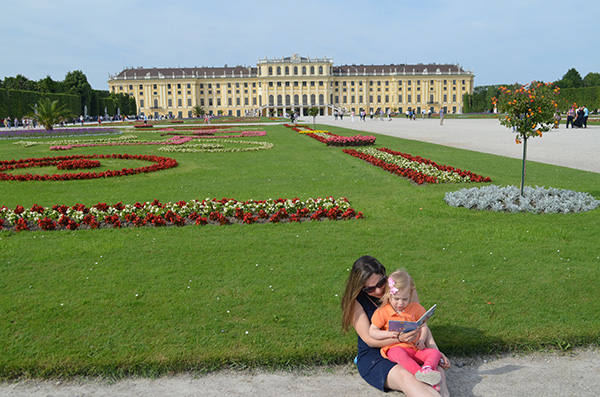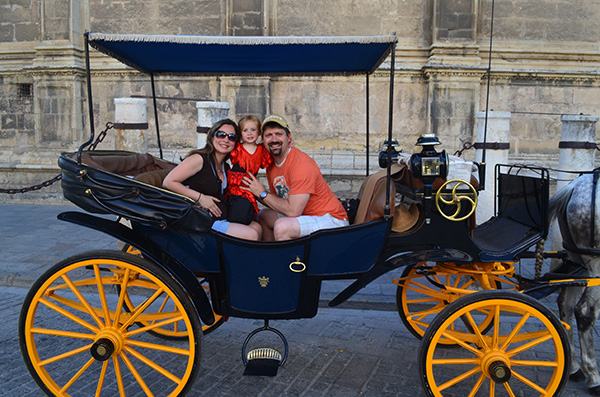
_ By Marianna du Bosq, Sep 6, 2015 | Bilingual Parenting, Learning English, Learning Spanish, Multilingual Kids, Multilingual Parenting, Raising Multicultural Kids_
Whenever I am asked how to teach and maintain a child’s language proficiency, I always refer to the two “key ingredients,” providing enough exposure and creating a need to use a language. In many cases these two things are easier said than done and our family was certainly put to the test during our time in Germany. My daughter attended the local preschool and overnight she was surrounded by German all around her! While my husband and I were thrilled at the opportunity of adding a third language to our family portrait, we also understood that if we wanted her to keep up her English and Spanish skills, we would have to take the lead. We were, after all, her only source of exposure in either of these two languages. Here are 5 strategies we applied to provide her with plenty of exposure in our respective languages.
- A robust reading routine. Every night, we set aside thirty minutes to just read to our little one. We take turns so that each one of us reads to her for about fifteen minutes in our respective languages. These thirty minutes are sacred for our family. Yet it was not always that way. For a few months, we were getting caught up in the day to day with things like wrapping up dinner, for example, and we were spending less and less time reading. That reading was becoming shorter and shorter. Both my husband and I started to notice and we collectively decided that we wanted to make this a priority and shifted our daily routine a bit so that we could make sure to spend this time together as a family. We know how beneficial reading can be for young learners and now we feel like we are being much more purposeful with our time together. Also, our daughter absolutely loves it so we are learning and doing an activity that she enjoys.

Video chats with family. Through video chats we were able to expand our English and Spanish bubble by enlisting the help of family members. We try to call at least one family member every day and our daughter loves it. She has a certain routine of things she likes to do for each person and it is really neat to see her interact and connect with loved ones that are geographically far away! It certainly makes it much easier to stay in touch. When she is talking to my family, she is practicing her Spanish and when she is talking to my husband’s family, she is practicing her English. It’s a win-win for everyone.
Narrate day to day activities. Although I would love to sit down every day and dedicate all the time in the world to my kid, I simply cannot. Just like many parents around the world, I have plenty of other things to get done during the day so I just try to incorporate her into as much of what I am doing. Sometimes the way I incorporate her is by simply narrating what I am doing. I do that even if I am just doing chores around the house. When I can, I turn it into a game but if it is not possible, I just tell her what I am doing and I have been surprised by how much she has learned this way. She has started narrating what she does to me, adding another fun element to our communication.
Elongating sentences. I am constantly encouraging my daughter to add more words to her “sentences.” If she says something like “Mami, un libro” essentially “Mami, a book” I will encourage her to add more words to what she is saying. I will say “Dame un libro mami por favor” or “Give me a book mami, please.” I usually repeat what I would like for her to say and then I ask her “Can you say that?” and she, so far, gladly repeats it. Sometimes by the next time she says it again to me she has incorporated it into her sentences, sometimes it takes a little longer. We do this a lot and so far she does not seem to mind it. There may come a day where she blows me off but for now I am taking full advantage of her willingness to add more words to what she is saying.

- Playing! Many childhood development skills can benefit from simple play. They can produce powerful age appropriate interactions with your children that can have a great impact on language development. In our home, we always find some time during the day to do some playing. There are so many opportunities for language when you are playing. You can talk about everything and anything. You can leverage toys and manipulatives to convey meaning. You can use movement to convey actions. You can use gestures to act out emotions. The sky is really the limit. I always encourage parents to dedicate just a bit of your day to playing with their children. It can be fun for all parties involved and very purposeful.
When I reflect on how we have been able to successfully add exposure to our target languages, I realize that they mostly just come down to one theme. We try to implement strategies where we are all enjoying ourselves. Find something you enjoy and it will likely turn into a sustainable strategy that you can then add to your language routine.
For more great resources on helping your child learn a new language (including using an AAC device, please visit Marianna du Bosq’s website as well as Gus on the Go.
Stories and Strategies fo...
